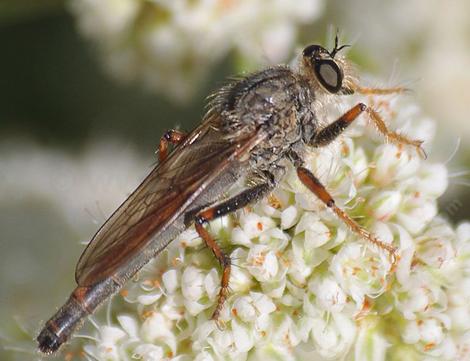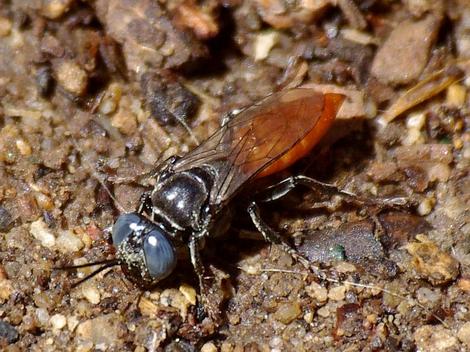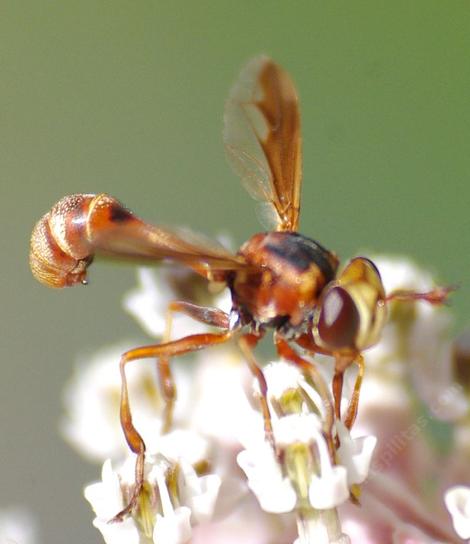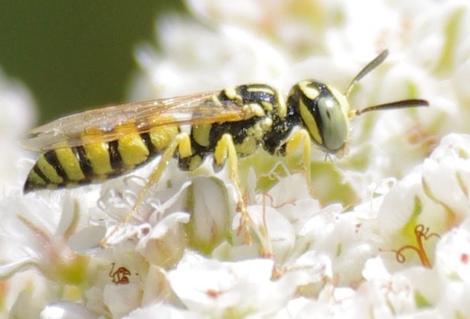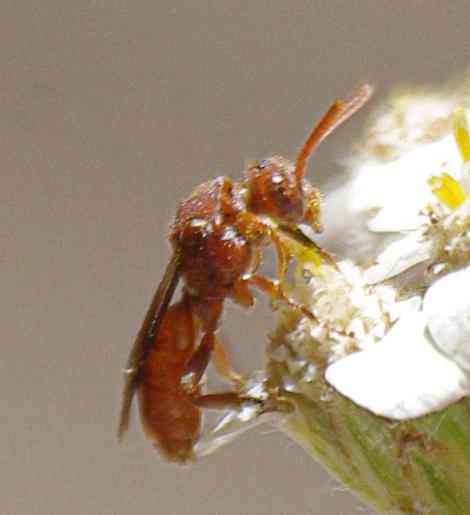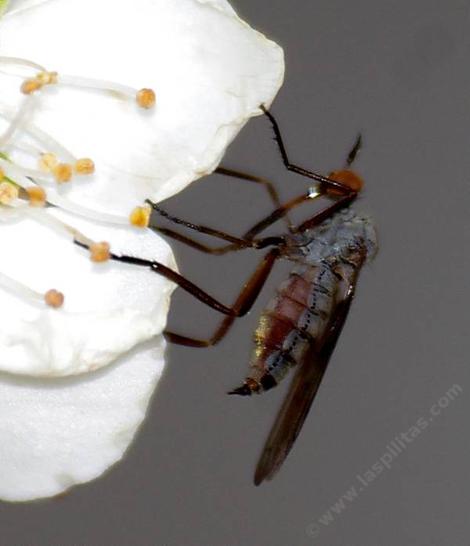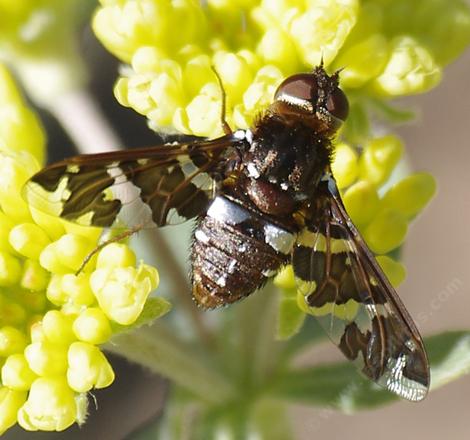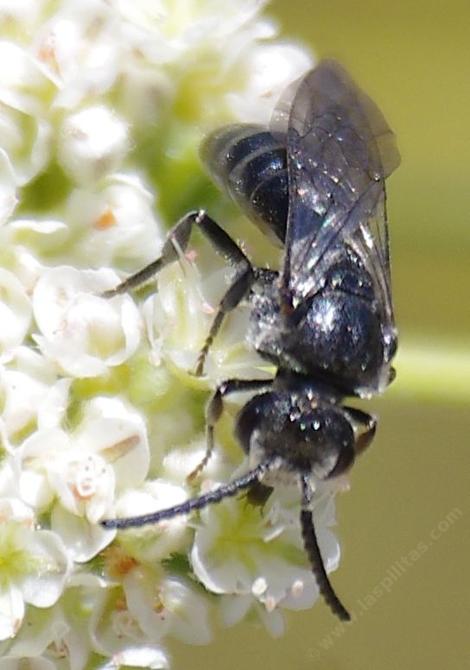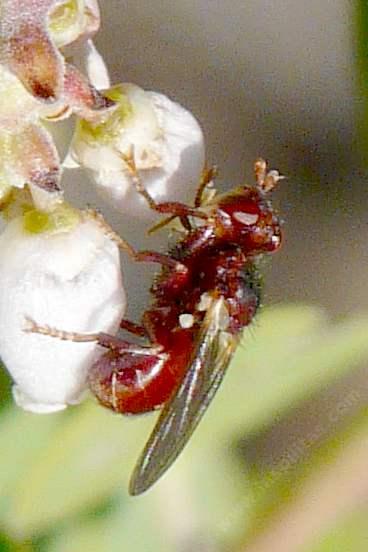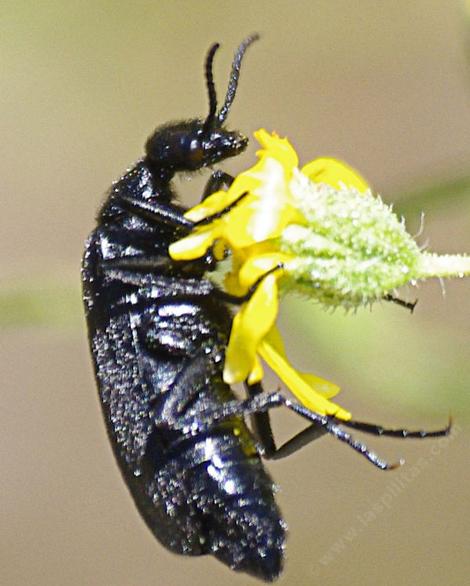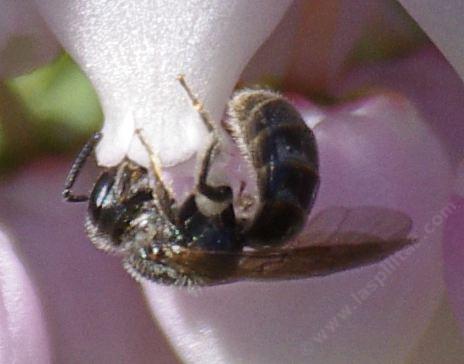Some of the Insect Predators we managed to get a photo of in California.
This is not a complete photo gallery, but at least it's a start. If you have any other photos you want to contribute email them to us.(Limit to 20 meg at a time please, or send us a DVD) These were all identified by http://bugguide.net .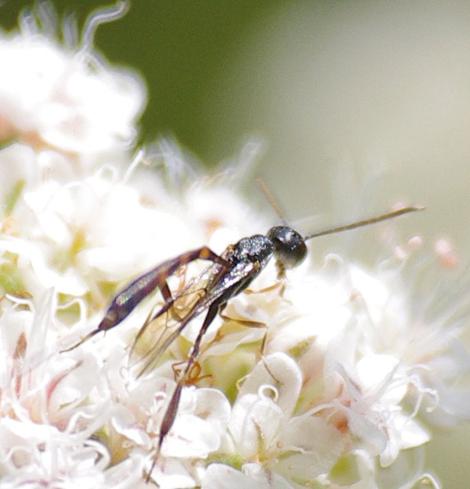
Gasteruption wasps
prey on Mason Bees and other small bees.
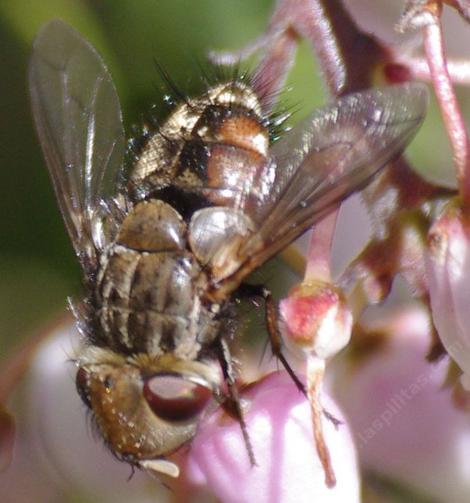
A form of Tachinidae, Gonia fly working the flowers of Arctostaphylos
standfordiana. This fly preys on caterpillers.
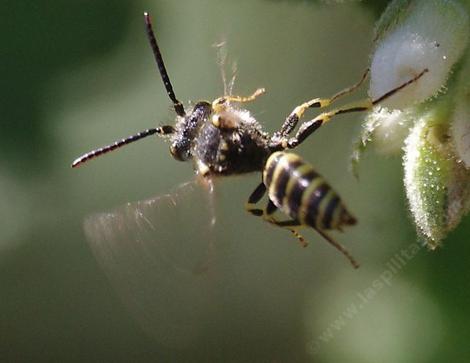
Nomada, Cuckoo bees are Clepto-parasites. They lay their eggs
in other native bee nests. Then eat the food and young of other
bees.This one was working the flowers of Ribes
indecorum.
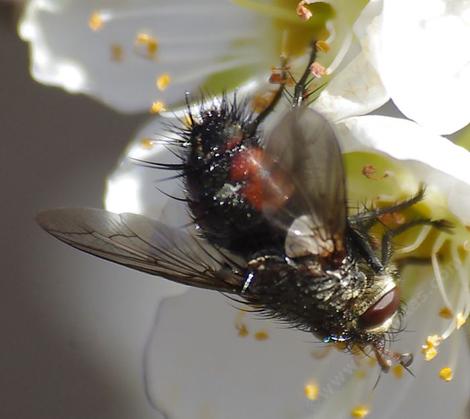
Peleteria,
Tachina Fly. Probably a predator of moths. This one is
pollinating a Plum.
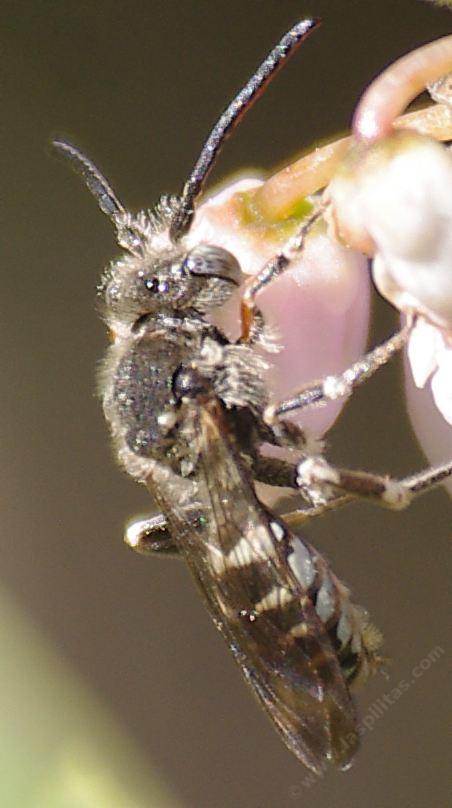
Nomada-crotchii is parasitic chiefly on Andrena.and the little sucker was stealing nectar from the manzanita flower. A real rotter.

A Tachinid
Fly. in the Voriini tribe. These flies attack butterfly and
moth larva.
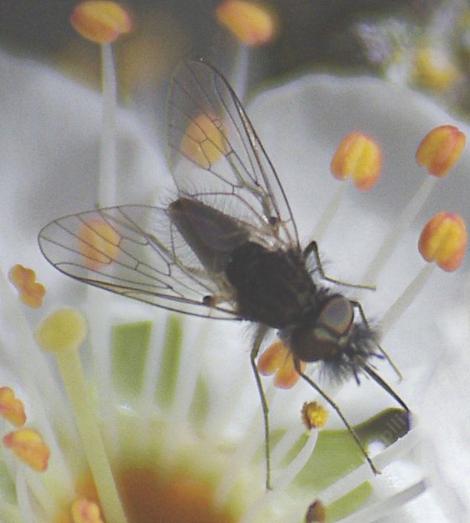
This little Beefly, Phthiriinae, (maybe Neacreotrichus) lays eggs among it's preys eggs. Lepidoptera, bees, and wasps, beetles, grasshoppers.
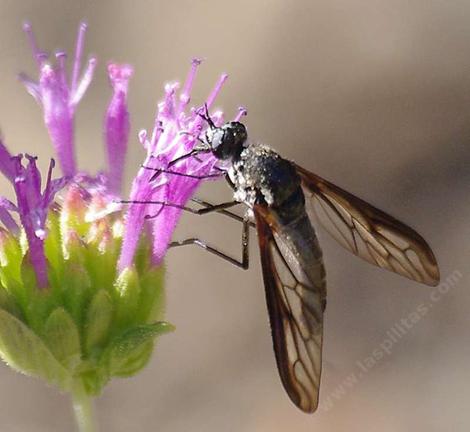
A California native beefly. Very different looking.
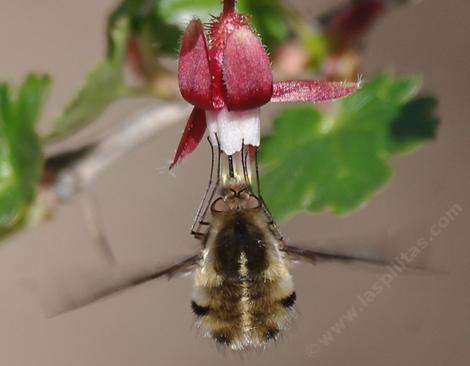
Another of the Beeflies. This is Bombus
major, probably the most common Beefly in the world. The
nightmare of all momma bees as it's larva can eat a whole
nursery.This Beefly was working the flowers of Ribes
californicum.
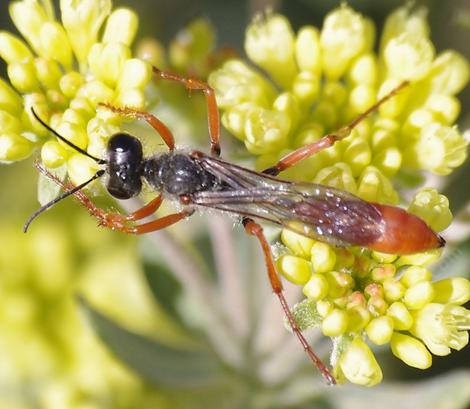
Ammophilina Thread Waisted Wasp prey on moth and butterfly larvae. Feeding on Eriogonum
umbellatum nectar.
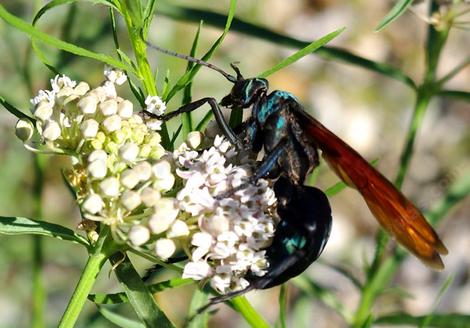
Tarantula hawk wasp (Pepsis formosa) on an Asclepias fascicularis,
Narrowleaf Milkweed
